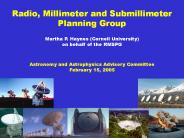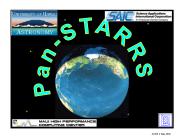Substellar PowerPoint PPT Presentations
All Time
Recommended
... Search for Substellar Companions in the Halo of Nearby Stars ... Ls. Burrows et al. 1997. Searches for Brown Dwarfs. Companions to nearby stars. Direct Imaging ...
| PowerPoint PPT presentation | free to view
Brown Dwarfs : Up Close and Physical In the mass range intermediate between stars and planets are the substellar objects known as brown dwarfs.
| PowerPoint PPT presentation | free to download
40th Liege International Astrophysical Colloquium The mass distribution of sdB stars from asteroseismology and other means: Implications for stellar evolution theory
| PowerPoint PPT presentation | free to download
Signatures of Magnetic Activity in Very Low Mass Stars and Brown Dwarfs Rachel Osten Hubble Fellows Symposium Collaborators Magnetic Activity manifestations in Solar ...
| PowerPoint PPT presentation | free to view
Donor at upper edge must be oversized by 30%! The importance of being slightly disturbed... Donors are oversized relative to MS stars of equal mass ...
| PowerPoint PPT presentation | free to view
Astrometry with the TMT S. R. Kulkarni California Institute of Technology Interdisciplinary Scientist Space Interferometry Mission
| PowerPoint PPT presentation | free to download
'A Method for Determining the Physical Properties of the Coldest Known Brown Dwarfs' ... determination of the physical properties for these sources, including, ...
| PowerPoint PPT presentation | free to download
... on what we have learned about their physical properties. ... are learning about temperatures and atmospheric properties. ... Physical Parameters ...
| PowerPoint PPT presentation | free to download
Title: No Slide Title Author: Glenn Schneider Last modified by: Glenn Schneider Created Date: 9/29/2001 10:11:51 PM Document presentation format: On-screen Show
| PowerPoint PPT presentation | free to download
Spectra. Existing Catalogs. White Dwarf 101 ... Determine physical properties via line fits in medium-high resolution spectra. ...
| PowerPoint PPT presentation | free to download
Brown dwarfs and star forming regions in the framework of the ... impact on different fields of Astrophysics, in particular on the area of star formation. ...
| PowerPoint PPT presentation | free to view
An A0 Search For Extrasolar Planets. Denise Kaisler, UCLA. i) Recent Findings ... sensitive to the planets that vrad searches are unlikely to detect ...
| PowerPoint PPT presentation | free to download
Weck et al. (2003), Skory et al. (2003) Wavelength ( ) PHOENIX models. CaH in the Visible ... Weck, Stancil, & Kirby (2003) ... Weck et al. (2004) Wavelength ...
| PowerPoint PPT presentation | free to view
Title: Zuk nftige Missionen Author: Bernd V lkl Last modified by: Bernd V lkl Created Date: 5/14/2006 3:13:26 PM Document presentation format: Bildschirmpr sentation
| PowerPoint PPT presentation | free to download
New facilities for new science
| PowerPoint PPT presentation | free to view
Faint stars usually have no name. The Names of Sirius. Alpha Canis Majoris (Bayer, 1603) ... Examples: Vega, Sirius. The Main Sequence: F. Temperature: 6000 ...
| PowerPoint PPT presentation | free to view
Brown Dwarfs: Stepping stones to the planets. Structure and ... Ab-initio calculations for Na-D, K I, FeH, CrH, TiH ... Equation of State of H2 and He, etc. ...
| PowerPoint PPT presentation | free to view
Radio, Millimeter and Submillimeter Planning Group Martha P. Haynes (Cornell University) on behalf of the RMSPG Astronomy and Astrophysics Advisory Committee
| PowerPoint PPT presentation | free to download
In some worlds there is no Sun and Moon, in others they are ... MOA ... OGLE/PLANET/MOA team members. OGLE-2003-BLG-235/MOA-2003-BLG-53 ...
| PowerPoint PPT presentation | free to download
Deficit (T association: Taurus, Luhman 2000 & Briceno et. al. 2002; IC348, ... STARDUSTY models gaussian profile observed spectra of confirmed PMS stars (H ...
| PowerPoint PPT presentation | free to view
all-sky survey to enable multiple science goals. applications from solar system to cosmology ... Static sky science. Enabled by stacking repeated scans to form ...
| PowerPoint PPT presentation | free to download
Exoplanets found to date are very diverse and have orbits and masses different ... on Na I and K I in the atmosphere of HD 209458b and 51 Peg (Bundy & Marcy 2000) ...
| PowerPoint PPT presentation | free to view
High resolution. High dynamic range, image fidelity. Bright, but complex, sources ... Very high spectral resolution ( 0.1 km/s) is required ...
| PowerPoint PPT presentation | free to download
Planets and Our Solar System. Our Solar System. Our sun is the center of our ... round asteroids such as Ceres and perhaps eventually Vesta, Pallas, and Hygeia. ...
| PowerPoint PPT presentation | free to view
Taurus and ? Oph show a large fraction of sources have disks massive enough to form planets ... Characteristics: linewidths are thermal. Very asymmetrical ...
| PowerPoint PPT presentation | free to download
T Tauri stars, named after variable star T in Taurus are PMS stars that have ... For every star with mass 10-100 MSun, there are ~10 stars with 2-10 MSun, 50 ...
| PowerPoint PPT presentation | free to view
... is clearly present in the T dwarfs dust species must be removed from photosphere. ... Loss of condensates from the photosphere. Objects brighten at 1 mm. ...
| PowerPoint PPT presentation | free to view
... neighbourhood, it is possible to obtain actual images of Jupiter-mass exoplanets. ... a planet 1-2 times the mass of Jupiter or an ordinary background star. ...
| PowerPoint PPT presentation | free to download
Origins of Stars, Planets, and Life with 2020 Vision Science with the GMT March 27, 2008
| PowerPoint PPT presentation | free to view
We always need a way to define parameters. site-specific parameters: eg, locations ... 10 milliarcsec relative astrometry. 100 milliarcsec absolute astrometry ...
| PowerPoint PPT presentation | free to view
Aging nearby spiral galaxies using H-alpha to UV flux ratios: Effect of model parameters ... Star formation in spiral galaxies. Formation occurs in spiral arms: ...
| PowerPoint PPT presentation | free to download
Ground-based detection of the secondary eclipse of TrES-3b ... Bruce Swinyard (Rutherford Appleton Laboratory, U.K.) On behalf of the SAFARI consortium ...
| PowerPoint PPT presentation | free to download
The effective temperature of a planet is a function of the planetary albedo (A) ... The planet must have plate tectonics to avoid runaway glaciation (as in Mars, ...
| PowerPoint PPT presentation | free to view
each is depleted in H and He (Saturn more so than Jupiter) ... Jupiter, Saturn, and Neptune all have significant internal heat sources in ...
| PowerPoint PPT presentation | free to view
thillwig@chara.gsu.edu. Abstract ... In both cases, the variability shows very little scatter from a sine curve. ... theory he classified a large number of PNe, ...
| PowerPoint PPT presentation | free to download
The sample was collected by photometric surveys in sky regions avoiding the galactic plane. ... sources observed nearby in the sky and within an hour of the ...
| PowerPoint PPT presentation | free to view
Sptzer Keck Spectroscopy
| PowerPoint PPT presentation | free to download
... (and U band) survey of the Taurus star-forming region designed to study the ... An X-Ray Survey of the Taurus Star Formation Region ...
| PowerPoint PPT presentation | free to download
... declination, but if the body were south of the equator, this length would be 90o ... opposite hemisphere, is length is 900 plus the declination of the GP. ...
| PowerPoint PPT presentation | free to view
Session 2: Rationale, definition, and tasks of the Science Team ... objects with their radial velocity curves already in the public domain. ...
| PowerPoint PPT presentation | free to download








































